FRIDAY, 7 JULY 2017
In the famous words of George Bernard Shaw, “the single biggest problem in communication is the illusion that it has taken place.” Scientists and engineers spend between 20% and 40% of their time writing; from grant proposals to fund their research, to scientific papers carefully crafted to meet the rigorous standards of academic journals. In this world of academic dialogue, these peer-reviewed papers are overwhelmingly the dominant currency. Communication with the world outside of academia, however, is a matter that can be easily overlooked.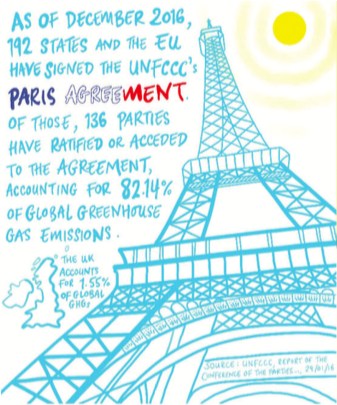
For climate scientists, the ability to connect with this outside world is becoming more and more vital. The consensus gap between scientists and the public is still widening, and recent political developments suggest that this uphill struggle is getting steeper. From the burying of the Department of Energy and Climate Change in the UK, to the G20 countries continuing to shell out $444 billion a year in support for the production of fossil fuels, climate change is intentionally being shifted out of the public focus.
Nevertheless, the evidence supporting anthropogenic climate change is there, and has been for quite some time. How can scientists make sure their message is being heard in the face of such political undermining of their work? To find out, we spoke to an array of experts around Cambridge at the intersections of climate science, education, and communication. From their insight into historical, political, academic and corporate approaches to communication, we hope to understand the most effective tools available to scientists and engineers to better engage people with this formidable and complex issue.
Our starting point was to investigate the current state of a airs, in particular the recent emergence of the concept of a ‘post-truth’ society. Writing in the Guardian in July 2016, Katherine Viner describes the situation. “When a fact begins to resemble whatever you feel is true, it becomes very diffcult for anyone to tell the difference between facts that are true and ‘facts’ that are not”, she says. With the huge amount
of information available on the Internet and social media, separating well-researched, credible facts from opinions becomes exceedingly difficult. Case in point, while the opening quote to this article is widely attributed to George Bernard Shaw, its first recorded usage was not until 1950 - the year that Shaw died - by journalist William Whyte in Fortune Magazine.
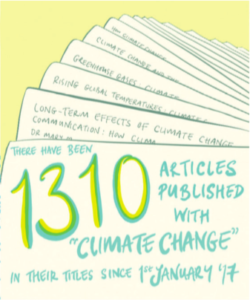
On the stages of television and Twitter, politicians’ opinions on climate change are pitted against scientific findings on an equal footing, regardless of the credibility and validity of the supporting evidence. Often, it can be that the best soundbite wins out, rather than the most accurate fact. This could be due in part to the rhetoric that has grown up around the idea of expertise that ‘the public’ is tired of ‘experts’, and conversely that the ‘the public’ has become too stupid to understand said ‘experts.’
There were some nuanced opinions from those we interviewed over whether we are actually living in a post-truth society. The assessments ranged from simple media-hype over healthy and expected scepticism towards experts, to sections of the public who do not like their suggested solutions and consequently argue against the science. Regardless, it is certain that we have too much to lose in the face of climate destabilisation for experts to view the public as hopelessly unteachable. The notion of a ‘post-truth’ society, where hyperbole is used in place of fact, cannot be used as an excuse to give up communicating; it does, however, suggest that something needs to change in the way the facts are presented in the public sphere.
Professor Simon Schaffer, a historian who focuses on sciences in the 17th-19th centuries, reassures us that this tension between ‘the public’ and scientists is not new. What has changed is the meaning of the term ‘expert’ as it is commonly used today. In the word’s earliest usage, “expert” was a verb, and ‘becoming expert’ in something was linked to direct experience. The scientists of the early modern era understood that people find it less easy to accept what they have not directly experienced.
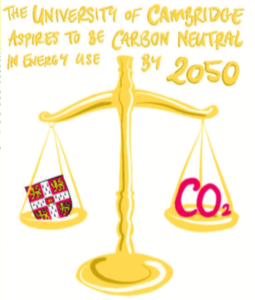 They therefore attempted to engage both their patrons and the public with flamboyant displays of their experiments. They would attempt to explain a range of phenomena, sometimes using the responses of untrained people to help demonstrate the objectivity of their claims. From Otto von Guericke’s impressive demonstrations of the remarkable powers of the air and the vacuum, to Christiaan Huygens’ ingenious proofs of his new model of Saturn’s ring, this notion of showing the story behind a fact or phenomenon is a communication tool with a very long history.
They therefore attempted to engage both their patrons and the public with flamboyant displays of their experiments. They would attempt to explain a range of phenomena, sometimes using the responses of untrained people to help demonstrate the objectivity of their claims. From Otto von Guericke’s impressive demonstrations of the remarkable powers of the air and the vacuum, to Christiaan Huygens’ ingenious proofs of his new model of Saturn’s ring, this notion of showing the story behind a fact or phenomenon is a communication tool with a very long history.Professor Schaffer argues that climate change is not unique in its complexity, but that unlike many other scientific demonstrations, a shared understanding of climate change could and should provide the ability to alter impending reality, not merely describe it. Schaffer suggests expanding our democratic representation to encompass not only human and industry constituents, but also environmental features. To better represent all the interests involved in decision making, he urged scientists to not view politics as dirty or polluting of their work: “Once you identify the political as the pollution, you’ve basically left the game.” Instead, they need to see politics as the natural progression in actively representing their work in the public sphere. He warns that it will not be a magic bullet, but will be a key approach to building bridges between the lab and other institutions.
“The most political thing you can do is to just tell people what’s going on”.
Politics is how agreement is produced within a group of heterogeneous perspectives. The end goal of a political deliberation is for a group to hold a common truth or shared understanding. For non-scientists to hold the same understanding of truth as lab-based researchers, this bridge of active representation of one’s work in spheres outside of the laboratory is crucial.
Representing one’s work in a public setting is not without its pitfalls, however. Professor Eric Wolff has been studying ancient climate through ice cores for over 30 years, but the relevance of his research to the climate change issue has thrust him and his research into the limelight. He talks about the need to be aware of and transparent about the limits of what you represent:
“I feel responsible for explaining what the problem is, but I think we can only go so far”.
Clearly signposting the rewall between scientific facts and personal opinions about potential solutions is just good housekeeping, to ensure that any objections to opinions do not also end up becoming a rejection of the science.
For climate scientists like Wolff, the key avenue for disseminating research to the public - at least formally - is through the Intergovernmental Panel on Climate Change (IPCC). The most recent report from the IPCC tries to reflect the high level of consensus by being direct in its conclusion that “human influence on the climate system is clear, and recent anthropogenic emissions of greenhouse gases are the highest in history.”
One way it tries to reach the widest audience possible is by presenting the information at various levels of summary. As Wolff says
“If you want to know about what the latest IPCC report said, there’s the 1000 page, the 20 page, the 2 page version, or I could tell you it in one sentence: ‘Yep, we still believe it’s happening’.”
Unfortunately, while the IPCC reports may be effective in reaching policy makers, it is not a document that often finds itself in the hands of the general public. As a researcher, one of the most important things for Wolff is convincing the public of the validity and relevance of his work, and he has noticed that graphs and statistics are not the most useful tool at his disposal: “From my own experience, when we show people an ice core, let them touch it, and tell them it backs up the results we just told them, they are much more convinced”. Allowing people to come closer to the experience behind the scientific findings, to see what scientists work with every day, seems to be as much a part of ‘telling the story’ today as it was in the 17th century.
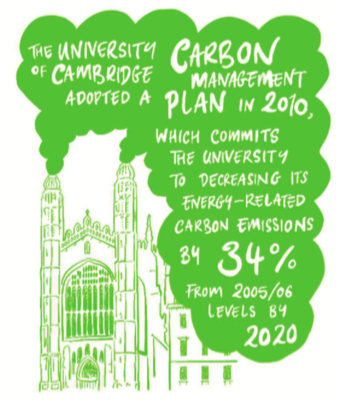 While Wolff focuses on helping make science tangible to communicate facts, Dr Hugh Hunt is more concerned with how visualisations can help people better understand their personal, every-day contribution to climate change. Personal CO2 emissions are directly linked to how people live their lives, but a change of lifestyle can be a difficult pill to swallow. “Do I really want to know that I have to stop flying, I have to stop heating my home, have to stop driving the car?” says Hunt, “Do we really want to hear this?”
While Wolff focuses on helping make science tangible to communicate facts, Dr Hugh Hunt is more concerned with how visualisations can help people better understand their personal, every-day contribution to climate change. Personal CO2 emissions are directly linked to how people live their lives, but a change of lifestyle can be a difficult pill to swallow. “Do I really want to know that I have to stop flying, I have to stop heating my home, have to stop driving the car?” says Hunt, “Do we really want to hear this?”Dr Hunt teaches Mechanics to undergraduate engineers here in Cambridge, participates in outreach events around the country and has created a number of popular science and history documentaries. As a big proponent of live demonstrations, he thinks that people need a way of seeing how their lifestyle contributes to the problem in order for them to accept responsibility for it:
“Quantifying your personal impact is the beginning of a discussion.”
But how do you quantify climate change? Average surface temperature rises, increasing atmospheric CO2, acidifying oceans - these are all vitally important consequences, but talking about a 0.85°C rise in global average surface temperature since 1880 does not mean much to a lot of people. Hunt thinks that making people aware of their own carbon emissions is one way to engage with them:
“Your yearly total kitchen refuse weighs around 250 kg. Your annual carbon footprint is 20,000 kg. The problem we’re having to deal with in climate change is 100 times bigger than the closest waste issue we have.”
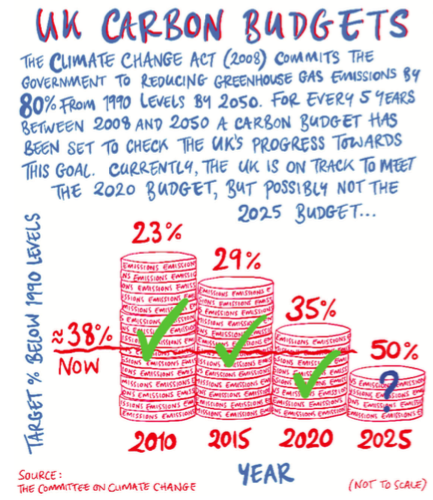 This approach can be applied to all aspects of life. Consider air travel, for example. For each hour airborne I generate 100 kg of CO2. A 20 hour flight from London to Sydney? “I would have 2500 kg of CO2 to dispose of when I got there – that’s 125 suitcases.” Converting one’s impact into units that people can relate to, visualise, and compare is essential.
This approach can be applied to all aspects of life. Consider air travel, for example. For each hour airborne I generate 100 kg of CO2. A 20 hour flight from London to Sydney? “I would have 2500 kg of CO2 to dispose of when I got there – that’s 125 suitcases.” Converting one’s impact into units that people can relate to, visualise, and compare is essential.Hunt wants to see these sorts of visualisations become commonplace, with airlines displaying them in-flight, petrol stations clocking carbon next to the price, even getting Cambridge colleges using it as a basis for awarding travel grants. However, until that starts happening, it is down to the individual to be aware of their impact, which relies on them being able and willing to sit down and do the calculations.
Being confident of the empirical basis to your opinion should not turn the conversation into a monologue, however. Anthony Haynes, founding director of communication consultancy Frontinus, says that from working with a wide range of disciplines and levels of expertise, he believes that people who welcome questions and are willing to address the fundamentals behind their work are typically the true experts. Those with confidence in their subject shine when discussing their ideas in the face of healthy scepticism from their audience.
The willingness to explain complicated work in plain language, while not over-simplifying the phenomena, is not only a challenging skill to master, but paramount in maintaining the type of common truth noted by Schaffer. Haynes mentions public scepticism about “so-called experts – people who are not as expert as is claimed and who over-reach themselves.” He explains that:
“it can be difficult to distinguish genuine experts from pseudo-experts, but generally the former are more likely to speak in plain language and provide concrete examples.”
Haynes advises his clients and mentees to put together a “communication portfolio” to escape the stagnant standard of exclusively focusing on peer-reviewed journals. By learning how to exploit other media of communication effectively, such as presenting, blogging, demonstrating, even tweeting, Haynes encourages an unabridged shift of focus towards the listener or reader. He asserts that what an expert knows needs to become a shared understanding between them and their audience.
Creating that shared understanding can be approached in two ways, which Ian Ellison, a senior engineer working in Sustainability in Product Development in the automobile industry, agrees with the idea of communication flow. Echoing similar sentiments to Haynes’, he urges us not to meet in the middle when attempting to communicate one’s findings, but to ‘meet at the other end’. Ellison warns that the logic-laden language of scientists, while “precise and conservative” in its estimates, can seem “dispassionate and lacking conviction”.
He explains that for those not particularly inspired by tables of numbers or graphs:
“an emotive response presented with absolute conviction can feel more reassuring than a technical one presented devoid of emotion.”
This presents a dangerous situation for climate scientists, one where the ‘alternative facts’ can take precedence over scientific ones if their delivery is better tuned to the audience. To stand a chance in this environment, scientists need to be able to speak the language of the debate. According to Ellison, they need to “learn the worldview of others and be prepared to use it to fully engage and persuade.” Ellison recognises that becoming an effective engineer was more than physics and maths. “To make a real difference”, he recalls, he needed to
“learn to argue and to communicate [and] practice empathy at every available opportunity.”
Technology does not succeed in a vacuum. Mitigating the effects of climate change will require a huge effort to encourage changes to our lifestyles and business operations, based on scientific findings and socially-just technologies. As scientists, we need to recognise and accept the political role we play in representing the work done throughout our academic institutions.
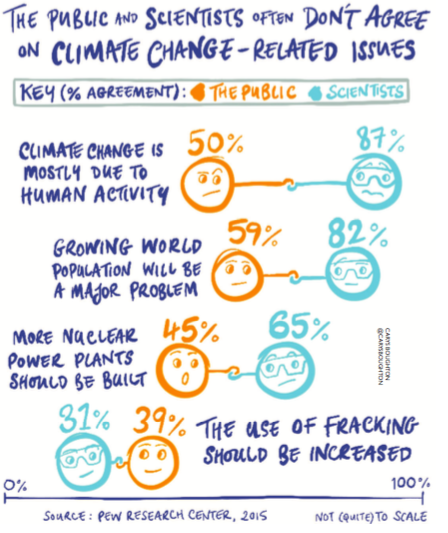 Conversations with a wide range of audiences need to be initiated, using a much broader variety of communication techniques than those prevalent in the academic science community today. Where are we supposed to learn these skills if we do not use them in our day to day life? “Your career will not give you very much free time” says Schaffer. He elaborates that “involving oneself in and committing oneself to that movement between the laboratory and other institutions” needs to be seen as essential rather than optional and extra-curricular. Pragmatically, as Wolff says, “there is a no-cost argument to it.” He says that learning how to tailor your approach to different audiences, empathising with them, and embracing the art of telling the story are skills that can be used every time you write a grant proposal.
Conversations with a wide range of audiences need to be initiated, using a much broader variety of communication techniques than those prevalent in the academic science community today. Where are we supposed to learn these skills if we do not use them in our day to day life? “Your career will not give you very much free time” says Schaffer. He elaborates that “involving oneself in and committing oneself to that movement between the laboratory and other institutions” needs to be seen as essential rather than optional and extra-curricular. Pragmatically, as Wolff says, “there is a no-cost argument to it.” He says that learning how to tailor your approach to different audiences, empathising with them, and embracing the art of telling the story are skills that can be used every time you write a grant proposal.Opportunities to practice this communication need to be sought beyond the confines of academia, from local events to global institutions. A number of routes to getting involved are shown below. If we are unhappy with the state of affairs in this so called ‘post-truth’ society, or the lack of political support for our research, then we as scientists have an important part to play in ensuring that scientific truths play a larger role in climate politics in the near future.
Get involved:
- Get Out of Fossil Fuels - Zero Carbon Society is a student group urging the University of Cambridge to move endowments out of the fossil fuel industry.
- Get Educated - The Royal Society climate change evidence and causes booklet lists frequently asked questions with simple answers, and a few key statistics.
- Learn How to Talk About It - Pint of Science brings the best academic scientists in the UK and globally to local pubs so that they can explain their latest research to the public.
- Get Out There - Cambridge Hands-on Science (CHaOS) is a student society that gets school kids excited about science by doing hands-on events and demonstrations
- Do the Legwork - Cambridge University Environmental Consulting is a student society set up to gather energy and water usage data for colleges and identify areas to improve.
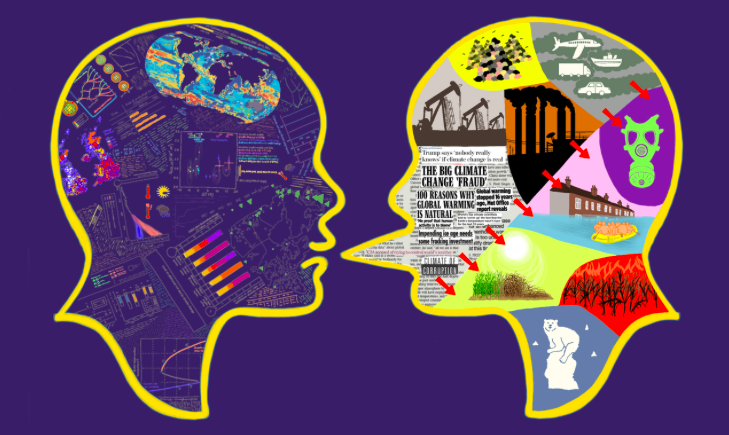 Main illustrations and infographics credit: Carys Boughton
Main illustrations and infographics credit: Carys BoughtonBanner image credit: Global Landscapes Forum
